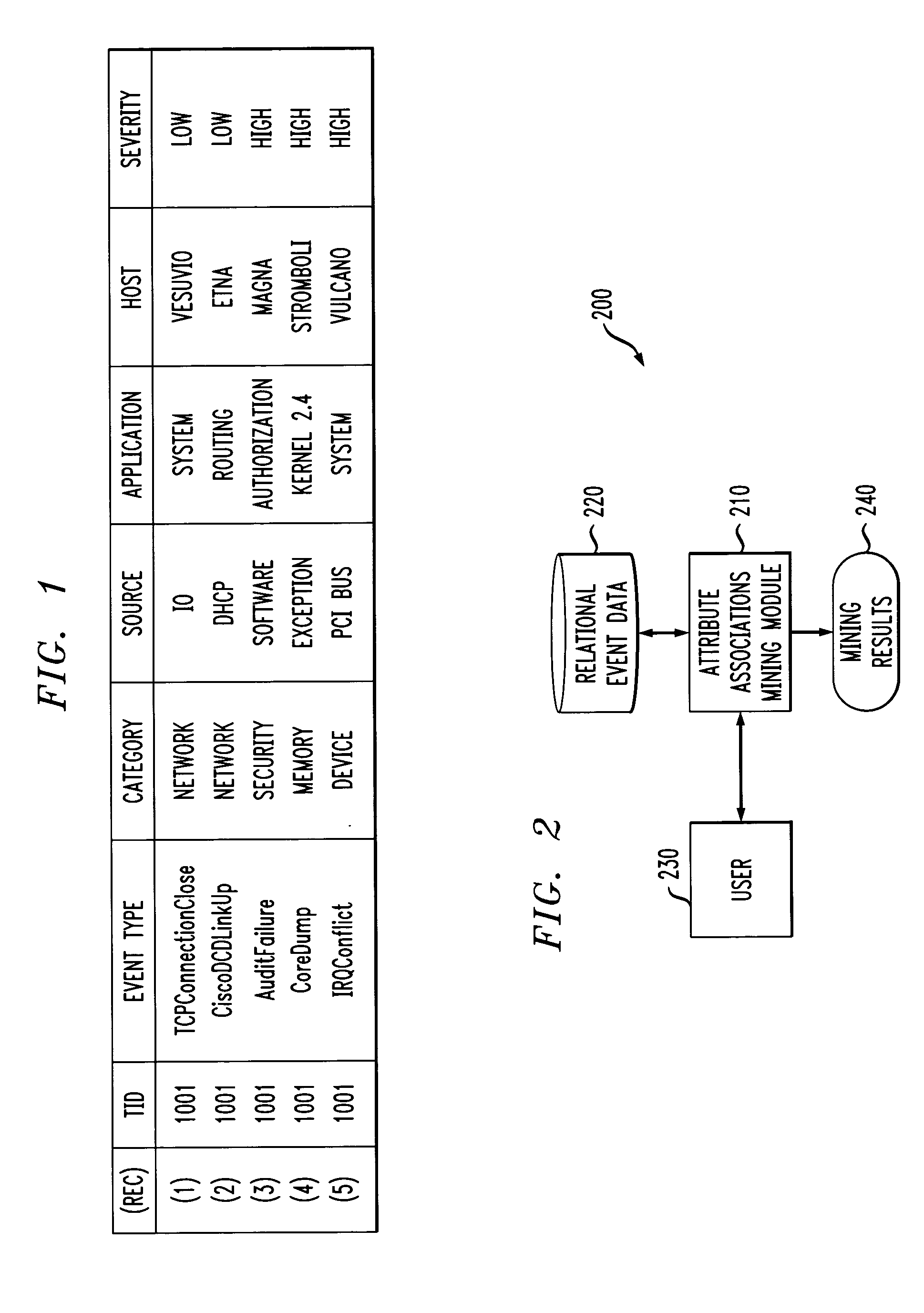Methods and apparatus for mining attribute associations
a technology of attribute associations and methods, applied in the field of data processing techniques, can solve the problems of user preferences that cannot be incorporated into the agrawal et al. mining process, difficulty in understanding the mining, and severe restrictions in the mining space, so as to reduce the execution time of mining.
- Summary
- Abstract
- Description
- Claims
- Application Information
AI Technical Summary
Benefits of technology
Problems solved by technology
Method used
Image
Examples
example 1
Join c3=(A)(B) and c1, =(BC) to derive c=(A)(BC)
SELECT c3.t11, c3.t21, c1.t12 FROM c3, c1 WHERE c3.t21=c1.t11
However, not all join operations can be expressed as succinctly. For example, to generate all possible patterns of (A)(AC) by joining c3=(A)(A) and c1=(AC), we will have to use the following SQL (Structured Query Language):
example 2
Join c3=(A)(A) and c1=(AC) to derive c (A)(AC)
SELECT CASE WHEN c1t11=c3.t11 THEN c3.t21 ELSE c3.t11 END CASE, c1.t11, c1.t12 FROM c1, c3 WHERE c1.t11=c3.t11 OR c1.t11=c3.t21
The reason of the complexity is because of the following: if p=a0a1is a pattern of (A)(A), then patterns derived from p for (A)(AC) can have two alternative forms: a0a1,*and a1a0,*. Thus, in the join condition, we need to compare attribute A of c1 to both attributes of c3. We show later that such join operations can be avoided.
We now show that the above join operations are complete, meaning that the result of the join contains all the patterns that have a support greater than min_sup.
Join Property I. Given a template c on level L, L≧2, the candidate patterns derived by joining the patterns of any of its two predecessor templates contain all the frequent patterns of c.
This may be proven as follows. Let p be a pattern of template c, and let ci, and cj be any two parents of c. Removing the i-th column...
PUM
 Login to View More
Login to View More Abstract
Description
Claims
Application Information
 Login to View More
Login to View More - R&D
- Intellectual Property
- Life Sciences
- Materials
- Tech Scout
- Unparalleled Data Quality
- Higher Quality Content
- 60% Fewer Hallucinations
Browse by: Latest US Patents, China's latest patents, Technical Efficacy Thesaurus, Application Domain, Technology Topic, Popular Technical Reports.
© 2025 PatSnap. All rights reserved.Legal|Privacy policy|Modern Slavery Act Transparency Statement|Sitemap|About US| Contact US: help@patsnap.com



